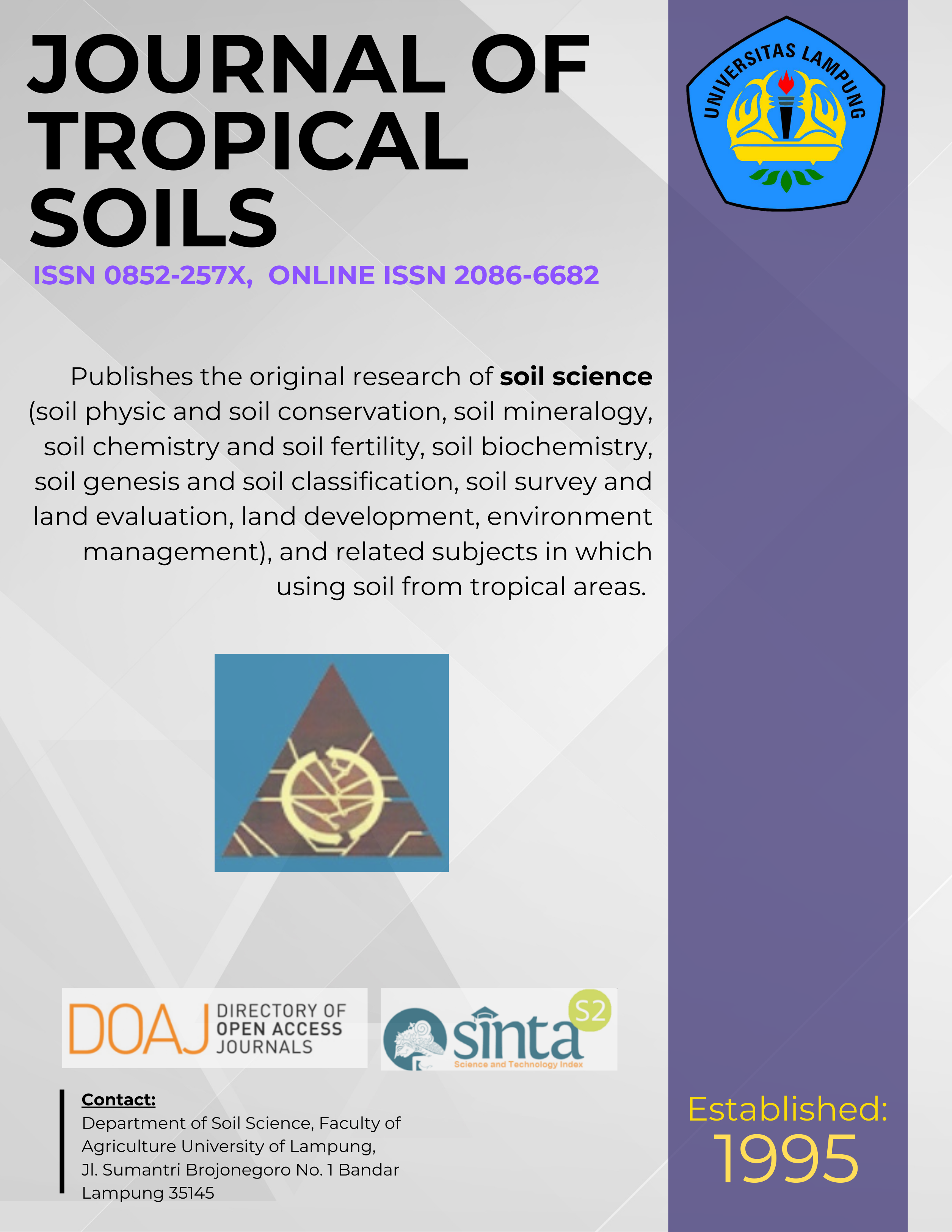Land Surface Evaluation Using Unit Hydrograph Methods at Way Besai Watershed, Sumberjaya, West Lampung, Indonesia
Main Article Content
Abstract
Sumber Jaya is an important water resource area for Lampung Province; therefore the local government protects this area, especially from clearing the forest for coffee plantation. However, the efforts in protecting the forest area had created conflict with the local farmers. The objective of this research was to evaluate catchments hydrological function from different land cover condition. The method using for this purpose was by investigating the unit hydrograph of each land cover which were observed from several rain events. The results showed that soil cover on each sub-catchment were relatively able to hold the input water. When rain falls, water was infiltrated into the soil before flow to the streams and water level increased slowly. When rain stops, water still flowed from the soil surface that water level did not decrease quickly. It can be concluded that the watershed surface was still in a good condition; however, watershed managements to prevent it from future destruction was necessary. The rest of forest area (12%) should be protected and no further coffee plantation in this area was allowed.
Keywords: Unit hydrograph, water level, watershed
Downloads
Article Details
Section
License for Authors
Authors who publish with this journal agree to the following terms:
- Authors retain copyright and grant the journal right of first publication with the work simultaneously licensed under a Creative Commons Attribution License that allows others to share the work with an acknowledgement of the work's authorship and initial publication in this journal.
- Authors are able to enter into separate, additional contractual arrangements for the non-exclusive distribution of the journal's published version of the work (e.g., post it to an institutional repository or publish it in a book), with an acknowledgement of its initial publication in this journal.
- Authors are permitted and encouraged to post their work online (e.g., in institutional repositories or on their website) prior to and during the submission process, as it can lead to productive exchanges, as well as earlier and greater citation of published work (See The Effect of Open Access).
License for Regular Users
Other regular users who want to cite, distribute, remix, tweak, and build upon author’s works, even for commercial purposes, should acknowledge the work’s authorship and initial publication in this journal, licensed under a Creative Commons Attribution License.

